This article serves as a summary and notes translated into Spanish of what I consider the Leaders of Learning course bases, from Harvard University, where Professor Elmore proposes 4 modes of organization divided into several dimensions, which form the quadrant of the 4 Organization Styles.
In addition, this quadrant is also used throughout the course to analyze and study other basic learning competencies, such as learning itself and leadership. Thus, you will be able to find in this blog summaries of the 4 Learning Styles and the 4 Leadership Styles proposed on this same scheme.
If these bases serve you, remember that you can assess for yourself whether or not to purchase the complete course at: https://www.edx.org/course/leaders-of-learning
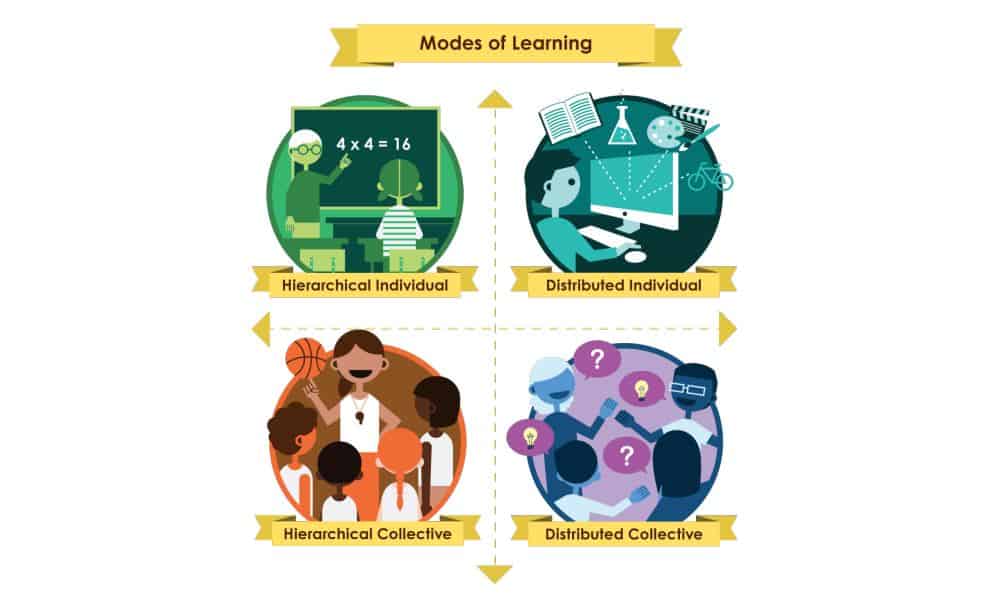
Post content:
Theory of the 4 Modes of Organization – Richard Elmore
Hierarchical Individual
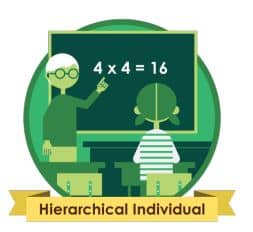
Of the fourth organizational styles, Hierarchical Individual:
Structure
- Credentials (licenses, certifications, and degrees) determine formal authority in the organization chart.
- Teachers are organized by level and content.
- Administrators are located in offices and interact with teachers in classrooms, as well as administrators in central offices.
Process
- Districts and states determine what content is delivered to students, administrators ensure that teachers follow these standards, teachers teach according to the standards, and students are accountable for their learning.
- National, district and local governments control what is learned, when and why.
- Student success is determined by assessments, while organizational success and success are determined by student performance and observations of students and observations of administrators.
Culture
- Administrators have organizational experience, while teachers have content experience.
- Teachers teach alone, but have collaborative relationships in team planning.
- Students work and study together, but are evaluated through individual assessments.
- Teachers control the content that students must master, and their relationships are marked by experience and authority.
- Administrators create the policies that teachers must and their relationships are defined by control and authority.
Hierarchical Collective
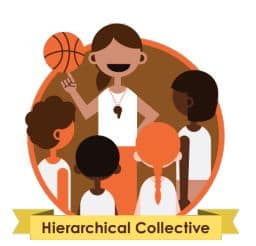
Of the fourth organizational styles, Hierarchical Collective:
Structure
- Accreditation, organizational structure, organizational structure, and interactions are often similar to individual hierarchical organizations.
- The contributions and support of the community vision of the common vision of the organization also influence the structure and authority.
Process
Transmission of competences, content control and the evaluation of learning are similar to hierarchical individual organizations.
- Teachers, administrators, and students are also members of the community and must represent the values and vision of the organization.
- There are methods to collect community members from all community members and respond to their input.
- Control of community values is shared and reinforced by all members.
- Student evaluation is based on traditional metrics as well as contributions to the school community and the broader community.
- The success of the teachers and the organization is based on the students, as well as the model of the organization's standards and contribution to the community at large.
Culture
Similar to a hierarchical organization
Individual organization, teachers own content experience, while administrators have organizational experience.
- The experience to express and the mission of the organization is shared by all members of the community.
- Relationships between and among teachers, students, and administrators are defined by the vision and purpose of the organization.
Individual Distributed
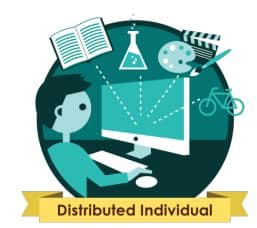
Of the fourth organizational styles, Individual Distributed:
Structure
- There is no one-size-fits-all model for organizations in this quadrant. this quadrant. Rather, the structure is dictated by the mission to create experiences that attract the target students.
- The structure must be able to adapt to the size of the organization and the objectives of the organization.
- The functions are determined by the needs of the learning experience experience
Process
Learning is transmitted from the organization to students through in-person experiences and/or digital experiences.
- Organizations decide what learning experiences to create, hoping that they will be engaging and engaging for learners.
- The student controls whether they want to participate in these learning experiences.
- The quality and uniqueness of offering, as well as feedback and student commitment determine the success of an organization.
Culture
- The organizations have experience in content and skills, as well as experience in creating means for students to acquire this information.
- Students have the final say on whether they find the methods and opportunities developed by the organization attractive to them.
- Differences in knowledge are what lead a student to experience, rather than formal authority.
- The organization determines the formal opportunities for interaction between the “learning authority” and the learner, as well as the interactions between learners.
- Students can create opportunities for interaction, using tools outside of the learning experience (Meetups, Facebook groups, etc.).
Distributed Collective
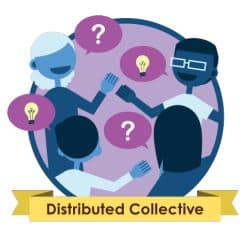
Of the fourth organizational styles, Distributed Collective:
Structure
- There is no specific structure shared by all organizations
collective. The structure is determined by the needs and objectives of the network. - A learning network can be flat or have hierarchical positions that participants rotate through.
- The structure may have open boundaries allowing students to come and go as they please, or have fixed entry requirements and conditions of participation.
Process
- Learning is transmitted through in-person experiences and digital experiences.
- The roles of the teacher and the student change from experience to experience, or even within the same experience.
- Participants are responsible for sharing what they know with others, and for agreeing on how the organization will operate.
- Participants control how to invest their time, energy and resources. resources. They choose based on the value of learning and relationships that the organization.
- Success is determined by the organization to achieve the goals and objectives and needs of its members and by the continued existence of the organization.
Culture
- The members of the organization have the experience. They have different types of knowledge and skills, as well as different perspectives on learning.
- Some members will bring more content, skills and experience than others; This varies at different times,
depending on the learning objectives, and also creates a motivation for members to learn from and teach others. - Relationships between members are built around the organization's common interest and common goals.
- All members play a role in organizational learning. Some members play a larger role in delivering content or creating learning opportunities, while others play a role in content mastery. This varies, and creates a reason and purpose for the organization and its members to continue their work.
